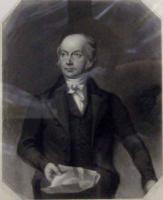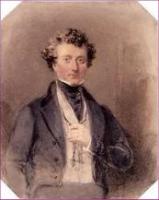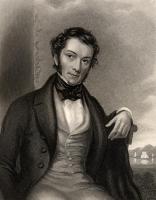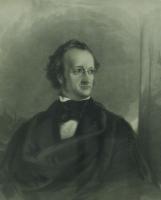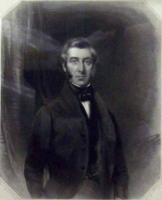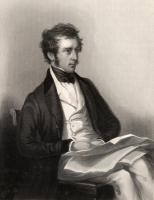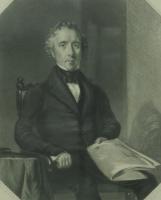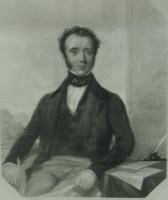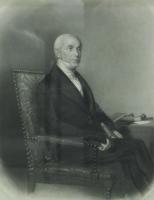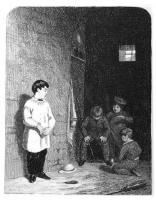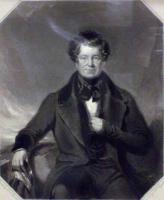
Charles Allen Du Val
His life and works
His Works
Although some are listed in reference books, no comprehensive list of his works seems ever to have been previously published (1). None of his works appears to be on public display, although some are stored in the vaults of art galleries. Many portraits are in private hands, often still in the safe keeping of the descendants of the subject painted.
He was renowned for his portraits of children. He created a beautiful pastel of the three daughters of the novelist Mrs Elizabeth Gaskell. William Gaskell, the author’s husband, was minister at Cross Street Chapel in Manchester and the first Chairman of the Portico Library. Peter Mark Roget, of thesaurus fame, was its first Secretary. Charles Allen Du Val knew them both well.
Photography in its earliest days was considered to be part of the art of painting. Charles Allen Du Val perhaps sometimes used his photographs as a basis for painting, instead of preliminary drawing. That technique was certainly exploited by his protégé Atkinson Grimshaw. However Du Val was a very skilled draughtsman and well able to paint to a high standard without using photography. He exhibited over forty pictures at the Royal Academy in London.
Even before he arrived in Manchester in 1833, Charles Allen Du Val was already painting miniature portraits. An engraving of a portrait of John Brooks was published in 1822, so the original must have been painted when Du Val was only a teenager.
While still living in Liverpool at 51 Lime Street, he exhibited three miniatures at the Liverpool Academy in 1831, including one of his father. Next year he sent no fewer than five pictures to the Academy Exhibition from his address at 26 Russel Street.
By 1833 he had moved to Manchester, and found work there through Thomas Agnew, who had a gallery in Exchange Street, trading as Agnew and Zanetti and later as Thomas Agnew and Sons. Thomas Agnew encouraged him both by direct commissions and by introducing him to his influential clients (2).
Another early portrait is that of David Holt (1790-1808), a cotton-spinner and philanthropist. A mezzotint engraving of this picture was published in 1839.
In 1843 Charles Allen Du Val painted a watercolour miniature of Thomas Milner Gibson, MP for Manchester from 1841 to 1857, and MP for Ashton-under-Lyne and President of the Board of Trade from 1859 to 1866. The little painting measures just ten inches by eight.
Charles Allen Du Val was a friend of the reformer Richard Cobden (1804-1865). Both were passionate opponents of the Corn Laws. When the Anti-Corn Law League was formed, Du Val visited Cobden in 1842 and showed him his drawings of the other Anti-Leaguers. This resulted in Du Val’s famous series of portraits of the members of the League, engraved by Lewis & Reynolds, mass produced and circulated in thousands.
Engravings of his portraits of Richard Cobden and John Bright (1811–1889) appeared in 1843, and in the following year those of Sir John Bowring (linguist and traveller 1792–1872), Joseph Brotherton (another reformer 1783-1857), and Henry Ashworth (a founder of the Anti-Corn Law League 1794-1880).
Other engravings of Du Val’s portraits, all published in the 1840s, include those of Charles Pelham Villiers (MP for Wolverhampton 1802-1898), Sir William Brown (MP for South Lancashire 1784-1864), Lawrence Heyworth (merchant and railway proprietor 1786-1872), Sir Edward Baines (MP for Leeds, newspaper owner and author 1800-1890), and physician Samuel Argent Bardsley (1764-1850) (3).
The most successful of his earliest works was a painting called The Ruined Gamester, which was engraved and published by T. Dewhurst, a print seller in Market Street. This print soon became very popular, and an etching of it by Du Val himself appeared in the North of England Magazine (4). Another picture that was engraved and published to popular acclaim was entitled Columbus in Chains.
In 1838 Du Val was commissioned by Daniel Lee to paint a portrait of Daniel O’Connell, the Irish politician. This was a great honour for the young artist, but there was the difficulty that O’Connell would only allow one sitting lasting two and a half hours. Fortunately Du Val had the ability to work rapidly and he quickly caught the character of a sitter.

The portrait was a great success. In 1839 it was exhibited in Dublin by Thomas Agnew and advertised in the city newspaper Freeman’s Journal and Daily Commercial Advertiser on 14 February in that year. An engraving was made. Copies sold well and became very popular. This was the picture that brought instant success and fame to the artist.
(1) A list of his known works had been compiled by Nicky Clark, based on a collated listing by Tom Askey. Almost certainly this list is incomplete, and information on the nature and present location of other paintings is welcomed.
(2) The account of the assistance given by Thomas Agnew is taken from the obituary of Charles Allen Du Val published in The Manchester Times on Saturday 22 June 1872.
(3) Prints of the engravings of portraits by Charles Allen Du Val are to be found in the collections of the National Portrait Gallery in London and Manchester Art Gallery.
(4) Unfortunately the popularity of the print of The Ruined Gamester did not extend to its engraver and publisher. Poor T. Dewhurst was declared bankrupt on 10 August 1838. Exeter Working Papers in British Book Trade History; 4 The British book trades, 1731-1806: a checklist of bankrupts by Ian Maxted. http://bookhistory.blogspot.com/search?q=Dewhurst
